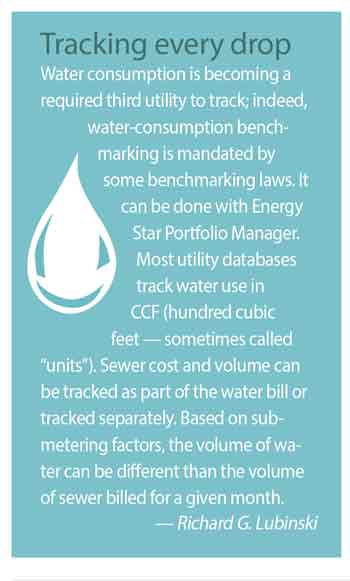Energy Benchmarking: Avoid Costly Fines For Failing To Comply
Third part of a three-part article on best practices in energy benchmarking as more cities and states make it mandatory.
Today, energy benchmarking may bring another benefit: The property can avoid fines for failing to follow requirements for energy benchmarking reporting. State and local governments across the nation have enacted laws to require energy benchmarking, so the facilities affected need to set up the process of annual reporting or they may face a fine. In general, the states and cities that have passed energy benchmarking laws do not have mechanisms for avoiding the stated fines.
To avoid paying fines, the energy-use data must be collected and uploaded into the Energy Star Portfolio Manager database before the specified deadlines. Smart companies will also use this data to better manage their facilities and to guide them towards cost-effective energy efficiency projects. Paying the energy benchmarking fine is wasting money better spent on energy efficiency improvements for buildings.
Many cities only report macro data on how buildings in their area are doing with EUI and their average Energy Star scores. Some cities are tracking EUI over time to determine if their energy benchmarking requirements are motivating building owners to take action to reduce their energy use. A few cities are planning to publish the EUI of each building so the public can see the relative energy efficiency of different buildings — including buildings competing for tenants. In the future, a customer might decide to rent office space in building A or building B based on their combined EUI and rental cost per square foot — in other words, the total cost of occupancy. Theoretically someone visiting a town would have the option to go to a government website to determine which hotel they will stay at based on EUI or Energy Star score.
Once companies or government agencies start to look at the EUI data, some buildings stand out as being energy efficient and while others are shown to be energy hogs. The EUI measurement tool clearly identifies which buildings need energy management audits and investments and which buildings do not. The old management theory that you can’t control what you don’t measure rings particularly true when looking at the EUI of various properties. Government-mandated energy reporting and Energy Star building scores reveal problem buildings that are also opportunities for great return on investment (ROI). An Energy Star study of 35,000 buildings showed that buildings that benchmarked using Portfolio Manager for three consecutive years achieved annual energy savings of 2.4 percent, with a total savings of 7 percent over three years. The buildings’ Energy Star scores increased over that time by an average of 6 points. The more that benchmarking motivates facility managers to perform energy audits and implement energy conservation measures, the greater the reduction will be in energy use.
The energy engineering that follows this preliminary data reporting can be complicated. An independent certified energy manager (CEM) can guide facility managers to a more comprehensive understanding of the causes of high EUI in relation to each building’s design, mechanical/electrical/plumbing (MEP) systems, operating requirements, and local utility consumption and cost history. The goal is to identify realistic energy-related improvements using conservative assumptions to generate realistic financial projections of simple payback, return on investment (ROI), net present value (NPV), internal rate of return (IRR), plus the eventual impact on net operating income (NOI) and asset appreciation. Like most things in business, there will be competition for investment dollars between energy conservation measures and other business interests. In recent years there are also other considerations impacting ROI such as demand-side management rebates, alternative funding options including government-based public financing, on-utility bill financing, and energy saving performance contracting in some cases.
 Business necessity
Business necessity
Benchmarking energy consumption and cost is no longer a nice thing to do but a business necessity for financial, governmental, and environmental reasons.
Even some utility companies are motivated to care about facilities’ EUI, with government-mandated demand-side management programs intended to encourage energy conservation and thereby reduce the utility company’s capital investments (and eventually to save the facility money with lower utility rates). Intelligent energy efficiency investments meet a definition of a win-win for all involved. Intelligent energy management and energy management investments help ensure a company’s long-term profitability, provide owners and investors with predictable long-term returns, and positively impact the organization’s image with tenants, investors, and the public at large. As the expression goes, “failure is not an option.”
Serious business owners also plan for the measurement and verification of the actual energy savings generated by energy efficiency investments. Energy benchmarking tools combined with a certified energy manager to support energy efficiency efforts will provide senior management with the needed reporting on the real world results of energy efficiency projects.
Richard G. Lubinski, CEM, CEA, AEE Fellow, is president of Think Energy Management LLC, an energy consulting firm with 35 years energy management experience. He can be reached at rick@think-energy.net.
Email comments and questions to edward.sullivan@tradepress.com.
Related Topics:









 Business necessity
Business necessity 




